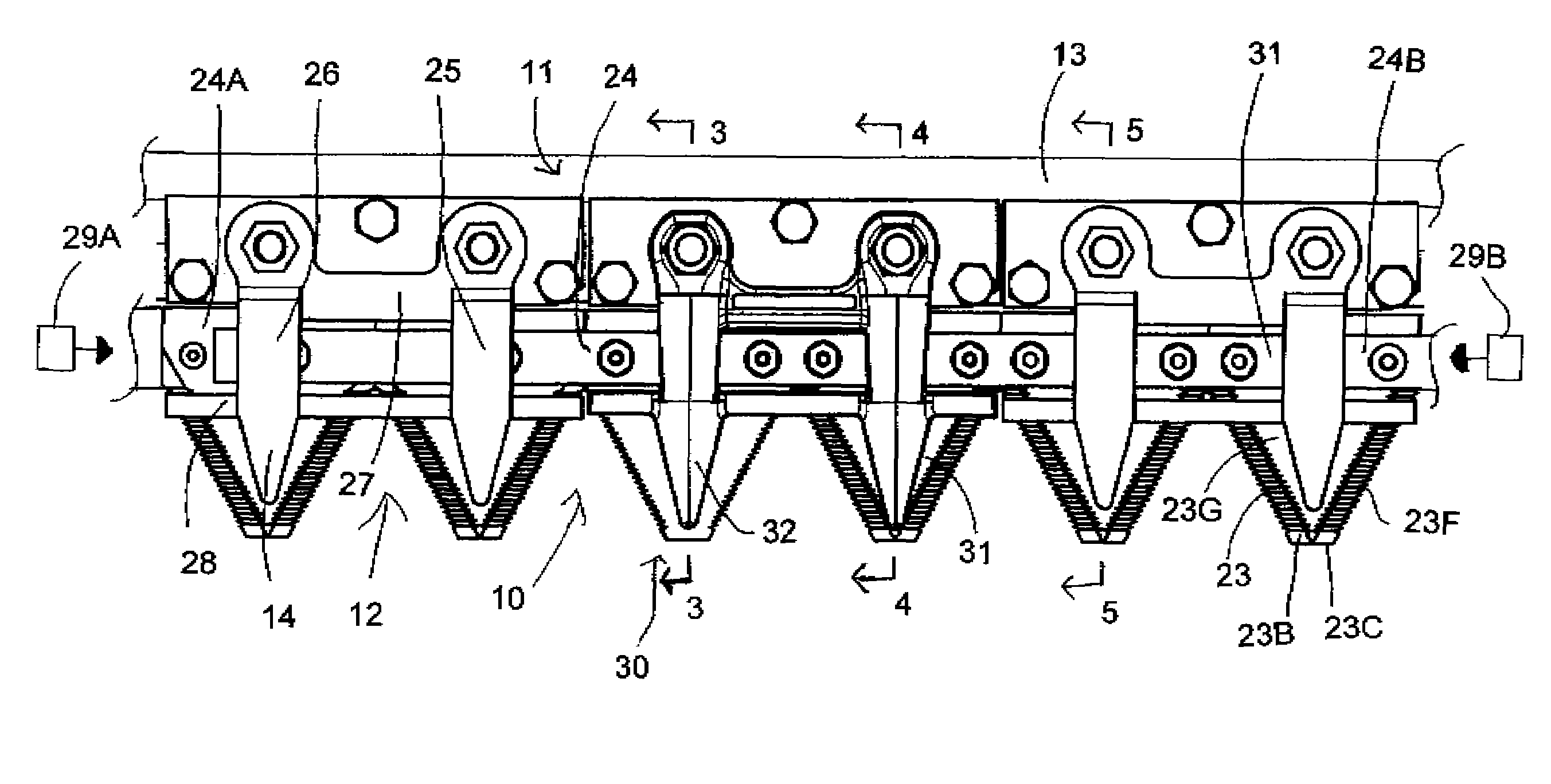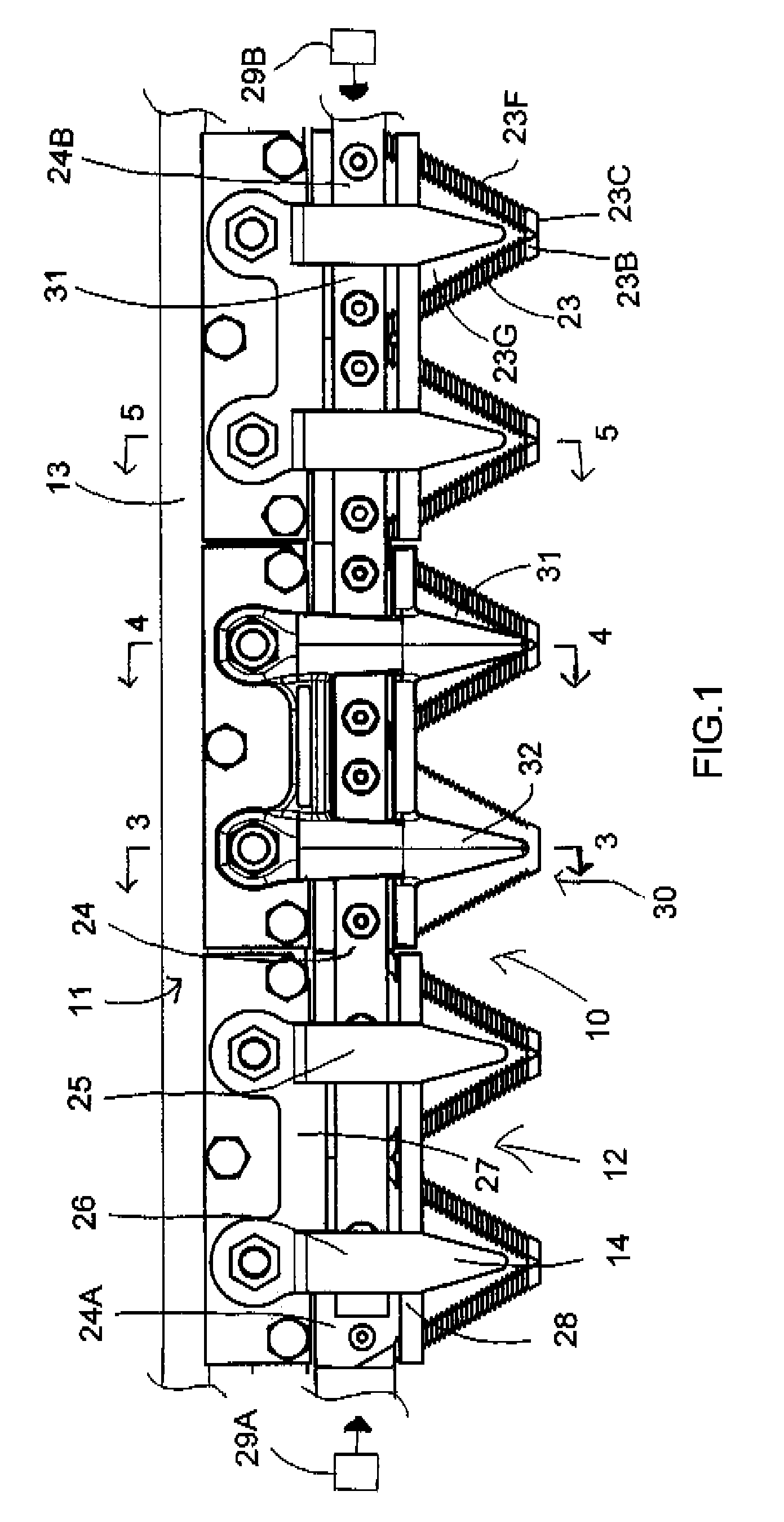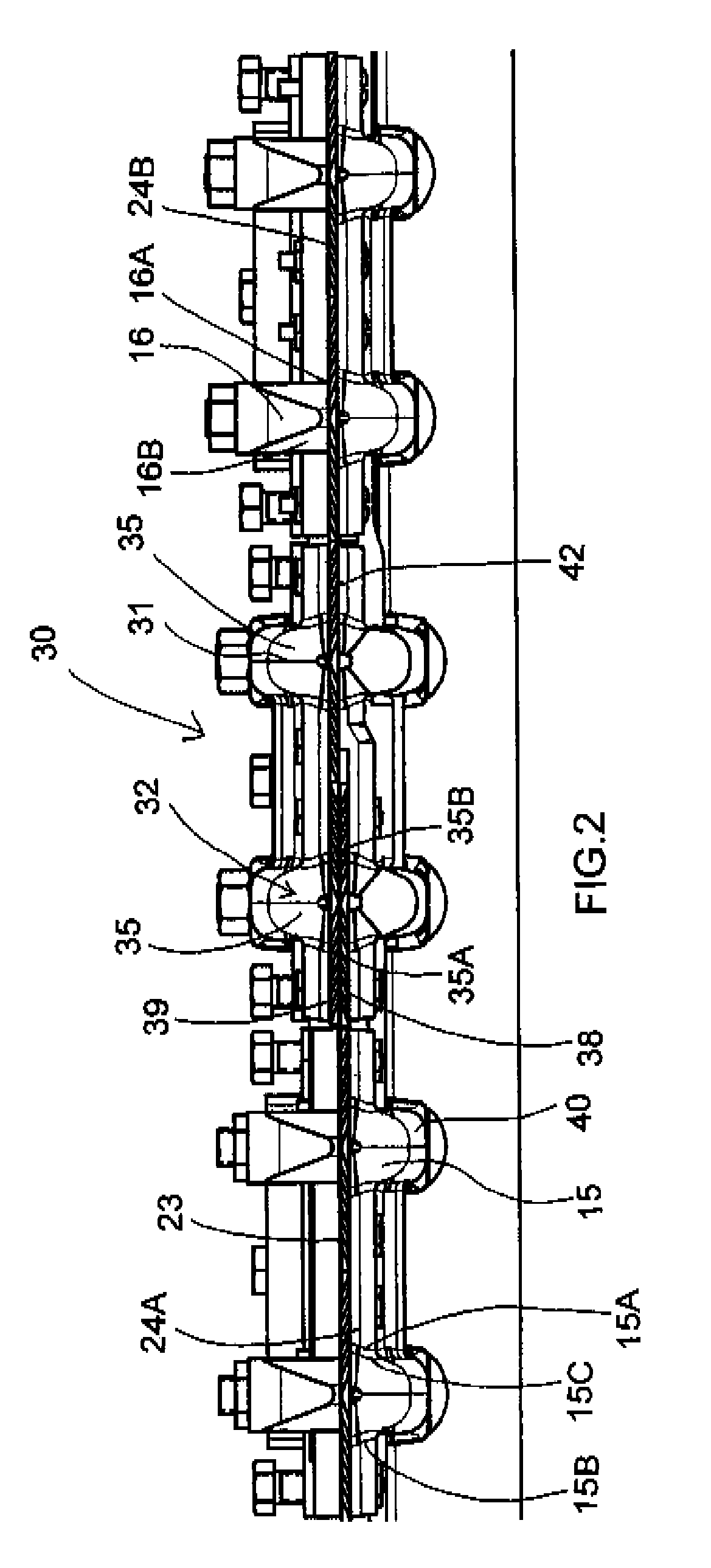Knife guard construction for sickle knife
a technology of sickle knife and blade guard, which is applied in the field of crop cutting device, can solve the problems of crop engaging this front edge rather than the side cutting edge of the blade, affecting crop yield, and affecting crop yield
- Summary
- Abstract
- Description
- Claims
- Application Information
AI Technical Summary
Benefits of technology
Problems solved by technology
Method used
Image
Examples
Embodiment Construction
[0130]In FIGS. 1 to 5 is shown a first embodiment of a crop cutting device generally indicated at 10. Only a part of the complete machine is shown since the remainder of the machine may vary widely depending upon requirements and since the construction is of course well known to a person skilled in the art. In this embodiment as shown, there is a frame generally indicated at 11 which of course forms only one part of the total frame structure that is the part of the frame that is relevant to the present invention.
[0131]The cutting device 10 further includes a cutter bar 12 attached to the frame structure 11. Thus the frame structure 11 in the part as shown comprises a guard bar 13 to which is attached a plurality of knife guards 14. The guard bar 13 is attached to a cutter bar 15 along the front edge of a frame structure which supports the guard bar in fixed position across the front edge of the frame for a cutting action of the crop cuffing device on the standing crop.
[0132]The knif...
PUM
 Login to View More
Login to View More Abstract
Description
Claims
Application Information
 Login to View More
Login to View More - R&D
- Intellectual Property
- Life Sciences
- Materials
- Tech Scout
- Unparalleled Data Quality
- Higher Quality Content
- 60% Fewer Hallucinations
Browse by: Latest US Patents, China's latest patents, Technical Efficacy Thesaurus, Application Domain, Technology Topic, Popular Technical Reports.
© 2025 PatSnap. All rights reserved.Legal|Privacy policy|Modern Slavery Act Transparency Statement|Sitemap|About US| Contact US: help@patsnap.com



